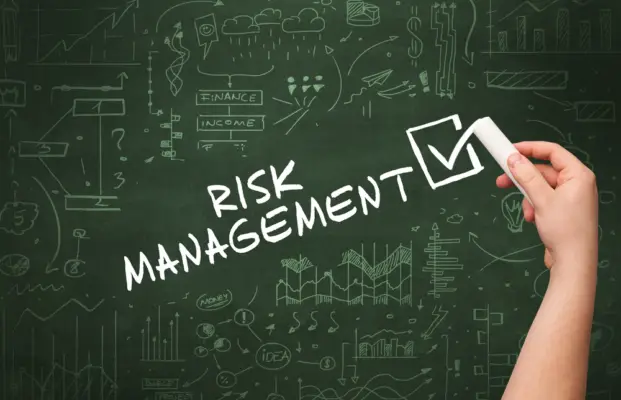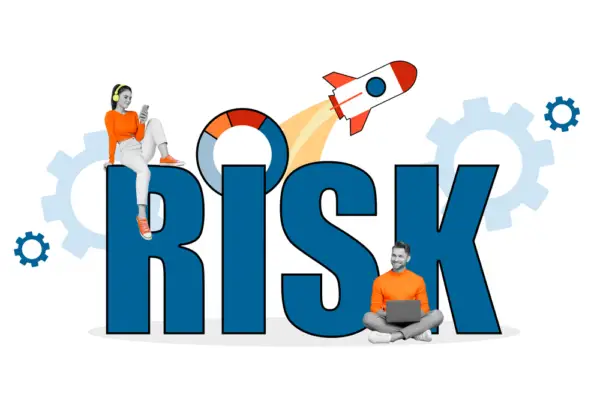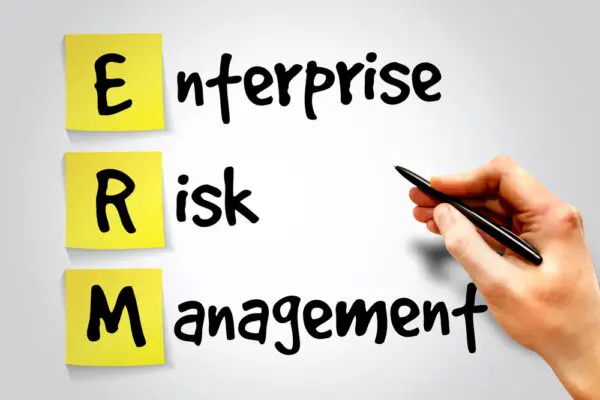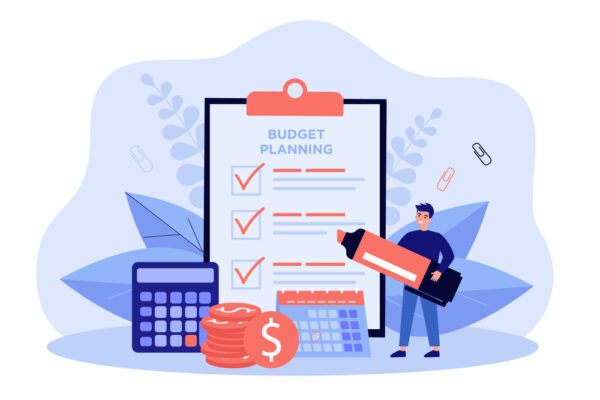Contract risk management is the process of identifying, assessing, and mitigating risks that may arise from contracts. With the proactive approach to contract risk management, businesses can protect themselves from potential losses and minimize disruptions to their operations.
Contracts are integral to running a successful business, containing crucial information about the goods or services being provided by each party involved. But with any legal document comes risk – from unknown obligations placed on companies to unexpected costs due to inaccurate or vague language in contracts.
Managing security risks is an essential part of the contract process, helping your company avoid costly problems down the road and allowing you to concentrate on what matters most: growing your business.
In this blog post, I’ll take a comprehensive look at how you can effectively manage contract risks – from the initial assessment by your legal and procurement teams all the way through completion.
Steps of Contract risk management process
1. Identify Risks
The first step in the contract risk management process is to identify risks that may be associated with a particular contract. To do this, businesses should review the terms of the contract and identify any clauses or provisions that could have a negative impact on their business if they are not met.
For example, a clause that requires the delivery of goods within a certain time frame could be considered a risk if the supplier is unable to meet that deadline. Other risks might include clauses that allow for early termination of the contract or that give one party too much control over the terms of the agreement.
2. Assess Risks
Once risks have been identified, they need to be assessed in order to determine their potential impact on the business. To do this, businesses should consider both the probability of the risk occurring and the potential impact it could have if it does occur.
For example, a clause requiring the delivery of goods within a certain time frame may have a low probability of occurring but could have a high impact if it does occur (e.g., in lost revenue or disruption to operations). Conversely, a clause allowing for early termination of the contract may have a high probability of occurring but could have a low impact (e.g., loss of income).
3. Mitigate Risks
Once risks have been identified and assessed, businesses can take steps to mitigate them. There are many ways to mitigate risk, but some common strategies include insurance, bonding, and third-party guarantees.
Insurance can protect businesses from financial losses that may occur as a result of contractual risks (e.g., property damage, and liability claims).
Bonding can also protect businesses from financial losses by guaranteeing that funds will be available to cover any costs associated with contractual risks (e.g., missed deadlines, and early termination).
Third-party guarantees can provide businesses with protection against contractual risks by requiring another party to cover any losses that may occur (e.g., supplier bankruptcies).
Types Of Risk In Contract Management
Contract management is a complex process that involves many different risks. common contract risks can be divided into four main categories: financial, security, legal, and brand risk.
Financial risk is the most common type of contract risk. This is reduce risk is the potential loss of money due to poor or incorrect contract management. Financial risks can arise from miscommunication between parties, bad planning and demand management, ill-informed buying, or deliberate contract manipulation.
Security risk is another type of contract risk that companies should be aware of. This type of risk involves unauthorized access to the intellectual property, capital or confidential information contained within contracts. Companies should ensure that their contracts are secure and that only authorized personnel have access to them.
Legal risk is a third type of contract risk that businesses must consider when managing contracts. Legal risks can arise from non-compliance with laws and regulations, disputes between parties, or other legal issues related to the contract itself.
Companies should take steps to ensure they are compliant with all applicable laws and regulations in order to avoid any potential legal or regulatory risks associated with their contracts.
Finally, brand risk is another type of contract risk that businesses must consider when managing their contracts. Brand risks involve potential damage to a company’s reputation due to poor performance or failure to meet contractual obligations.
Companies should take steps to ensure they are meeting all contractual obligations in order to protect their brand and reputation in the marketplace.
There are many contractual risks every enterprise may face both directly and indirectly. however a critical component in good contracts management is anticipating potential risks, and past experiences and writing forecasts that minimize or prevent possible effects.
An organization should determine the risk appetite, as well as the practical probability of the agreement or the subsequent risk management strategies. Contract Risk Management enables a successful contract evaluation of all types of losses.

Common Risks Associated with Contract Management Processes
Risk is commonplace within contracts, and it’s never advisable to become complacent. It also leaves you vulnerable to human error or public redress.
Team members are obligated to know every potential threat and to determine the best possible process of mitigation and prevention. Lax risk management can be detrimental to legal risks and loss of opportunities.
Contract management processes involve a lot of risks, such as the risk of not meeting contractual obligations and the risk of not being able to effectively manage contracts. Common risks associated with contract management processes include:
The risk of not meeting contractual obligations
This is one of the most common risks associated with contract management processes. It can happen when parties fail to meet their contractual obligations or when there are discrepancies between the terms and conditions outlined in the contract.
The risk of not being able to effectively manage contracts
Poorly managed contracts can lead to costly disputes and delays in project completion. Contract managers must ensure that all parties involved in a contract understand their responsibilities and acceptable risk levels and have access to the necessary resources for successful completion.
The risk of non-compliance with regulations
Contracts must be compliant with applicable laws and regulations, including those related to data protection, privacy, labor laws, anti-corruption laws, etc. Non-compliance can result in fines or other legal or financial consequences only.
The risk of fraud or corruption
Fraudulent activities such as bribery or kickbacks can occur during contract negotiations or execution. Contract managers must be aware of these risks and take steps to prevent them from occurring.
Implementing a balanced approach to contract risk mitigation
It involves identifying, evaluating, and limiting the exposure to risks across an organization’s exposure to. To ensure that all contracts are managed effectively and efficiently, it is important to implement a balanced approach to contract risk mitigation.
The first step in this process is to standardize and incorporate effective clauses into all contracts. This will help to reduce the chances of disputes arising from the unclear or ambiguous language in contract lifecycle management.
Additionally, organizations should create a rigorous compliance program that outlines the expectations for each party involved in the contract. This will help ensure that all involved parties understand their obligations and responsibilities under the agreement.
Another key component of contract risk mitigation is understanding the potential risks associated with each agreement. Organizations should consider factors such as consideration, offer and acceptance, breach of contract clauses, termination rights, indemnification provisions, and dispute resolution procedures when drafting or reviewing contracts.
Finally, organizations should also have a system in place for tracking and monitoring contracts throughout their lifecycle. This will allow them to quickly identify any changes or issues that may arise during the course of the agreement.
To minimize the risks associated with contracts, it is important to follow best practices such as:
Thoroughly review the contract before signing:
It is essential to read and understand all the terms and conditions of a contract before signing it. This will help ensure that all parties involved are aware of their rights and obligations under the agreement.
Establish clear communication:
Make sure that all parties involved in the contract have a clear understanding of what is expected from them. This includes setting expectations for performance, payment schedules, key dates and deadlines, etc.
Negotiate terms:
Negotiating terms can help reduce risks by ensuring that all parties are in agreement on key points such as pricing, delivery dates, warranties, etc.
Document changes:
Any contract requests for changes or modifications to the original contract should be documented in writing and signed by both parties to ensure that everyone is on the same page.
Monitor performance:
Regularly monitoring performance can help identify potential issues early on and allow for quick resolution before they become bigger problems down the line.
Risk mitigation strategies can help identify potential risks before they become problems and allow organizations to plan for them in advance. This includes assessing the impact of any changes on existing contracts and making sure that any new contracts are written with risk mitigation in mind.
Organizations should also consider developing policies and procedures that address risk management issues related to digital transformation projects.
Organizations should also take steps to ensure that all stakeholders involved in the digital transformation process understand the importance of risk mitigation. This includes providing training on risk management topics such as data security, regulatory compliance, and privacy regulations.
Additionally, organizations should create a culture where employees feel comfortable raising concerns about potential risks associated with digital transformation projects.
Finally, organizations should consider using technology solutions such as automated contract management systems to help manage risk associated with digital transformation projects.
These systems can provide real-time visibility into contracts and help ensure that all parties involved are aware of any changes or updates made during the project’s lifecycle.
Overall, integrating risk mitigation into contract management activities is essential for successful digital transformation projects.
Through taking steps such as assessing potential risks, creating policies and procedures related to risk management, providing training on risk topics, and using automated contract management systems, organizations can better manage the risks associated with their digital transformation initiatives.

Best practices for contract risk management
Successful management of a risk organization requires transparency in the contract terms, visibility, and online collaboration. It could involve extensive shifts in behavior or a common goal.
There are several best practices for contract risk management that businesses should follow. First, it is important to identify the potential risks associated with each contract. This includes evaluating the financial, legal, and operational implications of entering into a contract.
Once these risks have been identified, businesses should assess and score them in order to determine which ones need to be addressed first.
In addition, businesses should establish a contractual risk team that will be responsible for managing the process of mitigating risks associated with contracts. This team should include representatives from all relevant departments, such as finance, legal, operations, and IT.
The legal team should also have access to the latest technology in order to digitize the contracting process and use automated tools to monitor compliance with contractual terms.
Finally, businesses should use data-driven analytics when making decisions about contracts. using data-driven analytics, businesses can better understand how certain decisions may affect their bottom line or other aspects of their business operations.
This type of analysis can help them make more informed decisions about contracts and reduce their overall risk exposure.
Automating Contract Data Mining & Identification
Software-based contract risk management is a tool for managing contract risks. Contract AI in CLM software can identify the contract data fields and provide rules about them. These sensitive data may include personally identifiable information, PCI payment card information or PPI information about customers.
Through using drag-and-drop contract authoring, your software can have natural language processing automatically collect data on a tidy contract record page. This feature helps simplify the mapping of contract language into predetermined contract data fields in a unified approach.
Why should you mitigate contract risks?
However, there may be some exceptions. Using an unbiased strategy will limit the risk. When organizations do not take proper steps in addressing contractual risks they may damage your organization’s brand reputation, finances, and operations.
Why do contracts have risk mitigation? All these require different technology tools to support their operations. This contracting process is essential because of its importance in protecting all interests while minimizing risks to the organization.
Identify contractual risks
First, you should identify what you currently have and where you are at risk. You will have to examine the contracts to identify the potential risk and types listed above as well. In addition to analyzing your current process, it’s helpful to identify how risks can enter your workflow to determine if you should add controls.
Establish a contractual risk team
You can begin developing a control and mitigation system within this contracting model. It requires that the risk management plan includes clear roles and descriptions and include an accountable, consulted, and informed model. You should then prepare re-entry plans to deal with risks causing higher exposures.
Use alerts and notifications
Keeping everyone updated on your contracts is easy using the notification system for the contracts. Using the standard process in all communications with a third party is essential.
Digitize the contracting process
In order for your team easier access to information and resources, digitize your contract processes and create centrally encrypted storage facilities for all relevant legal documents therein. Your RACI Model helps determine the role that digital systems need; you also have access to authentication authorizations.

Why should you use contract management software?
It has never looked simpler for businesses. Managing contract risks is crucial to a successful organization. Using tools and technologies, effective contract management and risk mitigation is now feasible in any location.
You can use Cloud-Based contract management systems that are totally customizable according to your particular CLM model. Using Contract Management Software is an effective way of managing all your contract data and boosting digital transformation efforts.
Conclusion
The contract risk management process is an important part of doing business because it helps businesses identify and mitigate risks that may arise from contracts. Through a proactive approach to contract risk management, businesses can protect themselves from potential losses and disruptions to their operations.
Have you read?
Fundamentals of construction risk management
Vendor risk management program
What is third party risk management lifecyle

Chris Ekai is a Risk Management expert with over 10 years of experience in the field. He has a Master’s(MSc) degree in Risk Management from University of Portsmouth and is a CPA and Finance professional. He currently works as a Content Manager at Risk Publishing, writing about Enterprise Risk Management, Business Continuity Management and Project Management.



